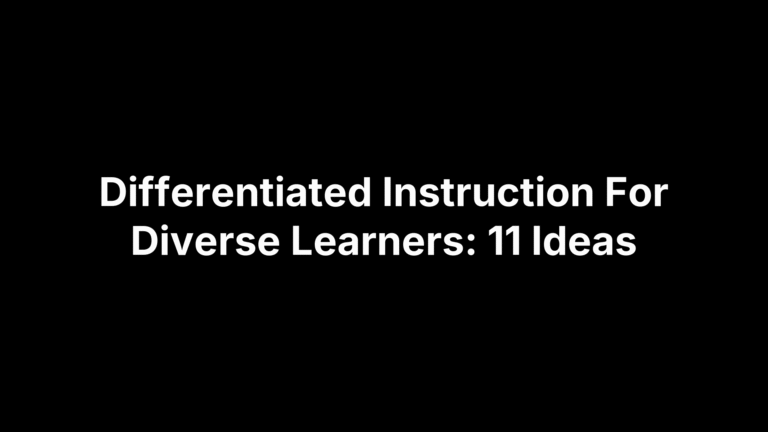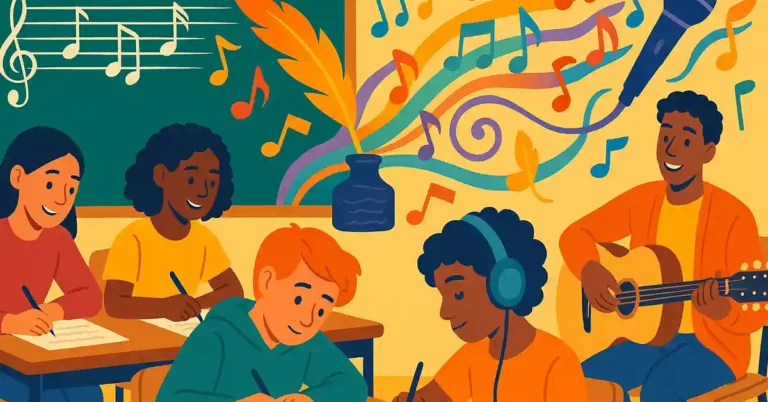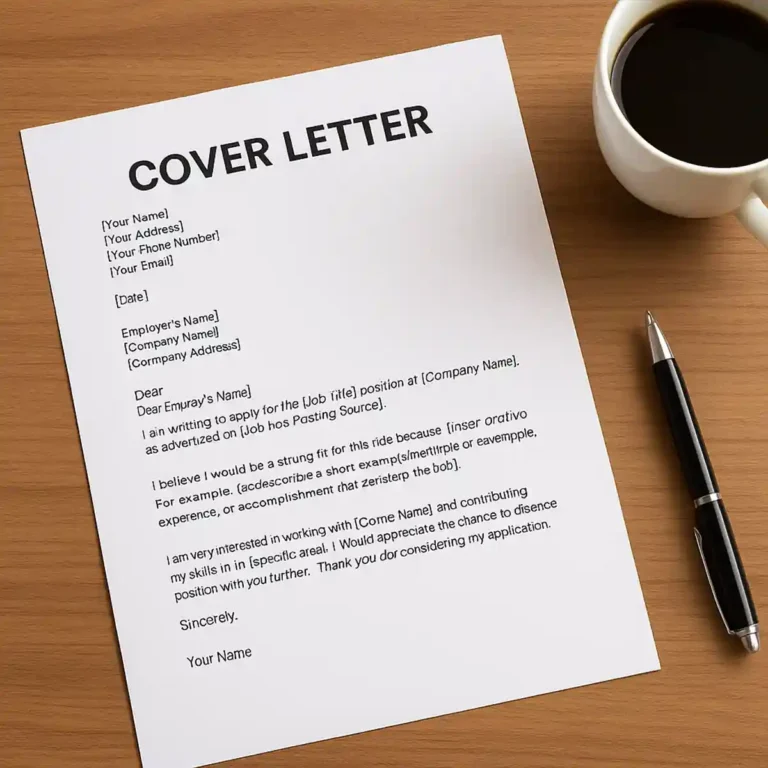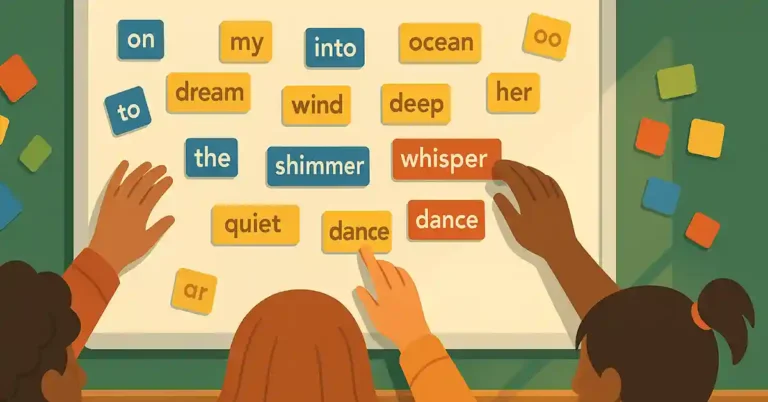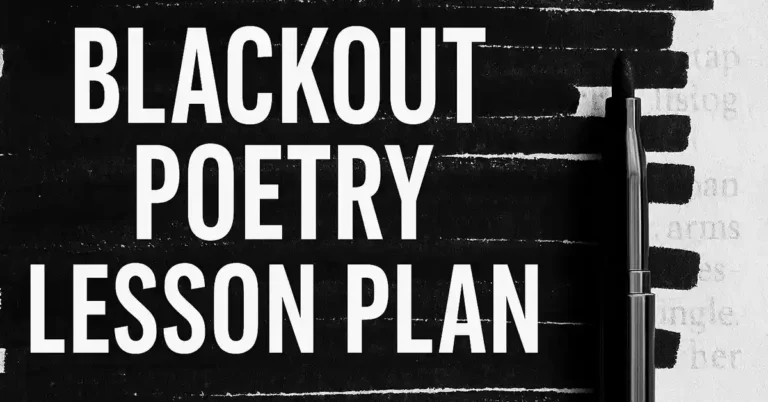Poetry Jenga: A Fun, Interactive Way to Teach Poetry in the Classroom
If you’ve ever tried teaching poetry to middle or high school students and been met with groans, sighs, or blank stares, you’re not alone. Poetry can feel intimidating, abstract, or—dare I say it?—boring to students who haven’t found their poetic groove. But what if I told you there’s a way to make poetry lessons thrilling, hands-on, and even a little suspenseful?
Let me introduce you to Poetry Jenga, a classroom favorite that’s equal parts literary exploration and high-stakes tower balancing. This lesson plan turns your average Jenga game into a poetic powerhouse, encouraging students to flex both their creative muscles and their steady hands.
What is Poetry Jenga?
Poetry Jenga is exactly what it sounds like: a classic Jenga set that doubles as a poetry prompt generator. Each block in the Jenga tower is labeled with a poetic form, theme, or stylistic element. As students remove pieces, they’re tasked with a creative challenge—either to describe the poetic form or write a quick poem using the theme or style written on their block.
It’s part icebreaker, part writing exercise, and part adrenaline-fueled game of don’t-knock-the-tower-over. And it works wonders in getting students excited about poetry.
Objectives of the Poetry Jenga Lesson
Introduce students to various poetic forms and literary devices.
Encourage spontaneous and low-stakes poetic expression.
Foster collaboration and discussion about poetry.
Create an active and engaging classroom atmosphere.
Materials Needed
A standard Jenga set (or multiple sets if you’re running several groups).
Permanent marker or label stickers.
A list of poetic forms, topics, and devices (examples below).
Timer (optional—for timed challenges).
Paper or notebooks for writing.
Setting Up Your Poetry Jenga Set
Before you play, customize your Jenga blocks. You can either write directly on the wooden pieces with a marker or use labels if you’d like to keep the set reusable for other subjects.
Here are some example prompts to include:
Poetic Forms:
Haiku
Sonnet
Free Verse
Limerick
Acrostic
Ode
Ballad
Themes and Topics:
Nature
Friendship
Dreams
Fear
Time
Love
Freedom
Literary Devices:
Simile
Metaphor
Alliteration
Personification
Onomatopoeia
Hyperbole
Aim for a mix that balances creative expression with deeper understanding of form and technique.
How to Play Poetry Jenga in Class
Split students into small groups (3–5 students per Jenga set works best).
Explain the rules of Jenga, emphasizing steady hands and fair play.
Each student takes a turn removing a block from the tower. When they pull a piece, they read the word/phrase aloud.
The challenge: Based on the block pulled, the student must:
Either explain the poetic form/literary device (great for review or early in a unit),
Or write a 2–4 line poem using the prompt (ideal for creative practice).
Discussion (optional): Invite the class or group to respond with thoughts or additions.
Keep playing until the tower falls! The suspense adds a fun edge to the learning process.
Bonus Rule: If the tower falls during someone’s turn, they must write a full poem using three of the prompts already pulled in the game.
Adapting Poetry Jenga for Different Grade Levels
Middle School: Focus more on themes and shorter poetic forms like haikus or acrostics. You can also allow drawing or acting out concepts for kinesthetic learners.
High School: Incorporate more complex forms like sonnets, villanelles, or slam poetry. Ask for deeper analysis of how a form impacts meaning.
Extensions and Variations
1. Poetry Jenga Battle:
Two groups play simultaneously. After pulling a block, one student from each group writes a poem based on the same theme. The class votes for the most creative or powerful response.
2. Quiet Round Challenge:
Use this version as a bell-ringer. Each day, one student pulls a block, and the whole class writes quietly for 5 minutes based on that prompt.
3. Collaborative Poem Round:
Each student adds one line to a group poem based on the current Jenga block’s prompt. This can be an excellent community-building activity.
Why Poetry Jenga Works
It turns abstract concepts into concrete, engaging challenges. Instead of lecturing about haiku structure or simile usage, you’re letting students play with the ideas. They’re laughing, leaning in, and (sometimes) nervously holding their breath as the tower wobbles—then surprising themselves with what they can create on the fly.
This is poetry that gets felt, not just analyzed.
Final Thoughts
Poetry Jenga brings energy into the classroom and shows students that poetry isn’t something to fear—it’s something to play with. Whether they’re crafting a metaphor-laden haiku or nervously adding a block to a trembling tower, students leave the experience with a stronger grasp of poetic concepts and, more importantly, a deeper sense of creative confidence.


